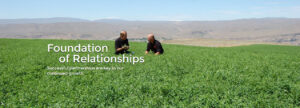Earlier this month the United States Department of Agriculture (USDA) released its annual hay report. The contents of the publication stunned many in the hay industry. Though widely accepted that hay supplies would be stressed this year, the estimates for loss of hay acreage and tonnage are much higher than expected. It appears that 2011 hay production will not only be lower than 2010, but carry over into May 2012 will also be shorter than last year.
In addition to fewer planted acres of hay, weather extremes throughout the United States have contributed to the hay shortfall. Depending on the location of the hay field, growers may have faced record cold, record wet, record hot, or record dry weather during the crucial spring and early summer months. A large portion of the Southern United States has faced an extreme drought while sections of the Midwest experienced widespread flooding. Saturated fields delayed growth in some areas whereas wildfires raged through others.
This strange mix of weather across the United States has dramatically affected the overall supply of hay for this growing season. The USDA expects Alfalfa and Alfalfa mixes to be down 4% from 2010 numbers. Tons per acre will be down only slightly, but with the 4% drop in planted acres, the overall availability of Alfalfa will be constrained. Other hay took a sharper blow this year with a 14% decline in tons. Both acres and yields have contributed to the lowest levels of production in almost 20 years. The USDA report indicates that other hay tonnage will reach levels not experienced since 1993.
The competition for hay will be tough this year as domestic dairies expand and ranchers affected by fire and drought turn to using baled hay earlier than usual. Prices will continue to rise as the realities of the limited hay supply becomes evident.


